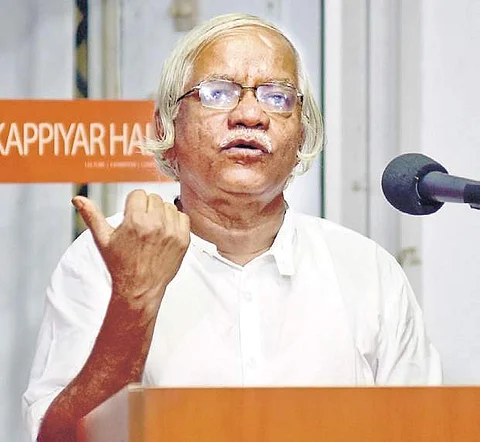

CHENNAI: “Over the years, I have gathered a lot more information by reading early alternate Tamil magazines than from what I learned in college or through other research,” stated V Arasu, former head of the Tamil Department of University of Madras, while addressing a gathering, on the early alternate Tamil magazine movement, at Roja Muthiah Research Library.
The educationist, who is known for creating an academic library for the benefit of research students at his residence, also curated an exhibition showcasing the Tamil print heritage and culture spanning a period of 200 years. “Be it conversations and discussions on the country’s freedom, topics ranging from social freedom, technological advancements, trade and commerce, Gandhian ideologies, literature, women empowerment, religion to news, and opinions of different communities, the alternate Tamil magazines catered to all. In fact, a lot of movements — communal, political- and education-related have been a product and result of such magazines,” he said.
But, just like the current scenario of rivalries between different media and publishing houses, the late 19th and early 20th century also witnessed a string of clashes. “Every magazine had its own agenda. Sometimes, one would counter the other. But, reading pieces of work from these publications would give different perspectives,” explained another speaker, R Azhagarasan, professor, Department of English, University of Madras.
An important branch of alternate magazines were the communal journals. “Communal and caste conflicts were a result of the all-India census conducted during the British Raj. This marked the beginning of an era of numerous community and caste-based magazines,” he shared.
Between 1920 and 1950, there were a plethora of periodicals published by women for women. “There were at least 30 women editors then. This was a time before dialogues on women in media and women empowerment were established,” said Arasu. Some of them were Madhar Marumanam (1936), Sindhamani (1923), Mangai (1946), and Pen Viduthalai. “Girls’ education, marriage reforms, women in society and family were some of the major themes discussed,” he added.
Communal journals
Viswakarmam (1913), Nadarkula Mithran (1919), Vaisiyan (1923), Yadhavamithran (1929), Gramini Kulam (1936) and Chettiyar Kula Mithiran (1935) were some of the community and caste-based magazines
By women for women
Madhar Marumanam (1936), Sindhamani (1923), Grihalakshmi (1936), Mangai (1946), Tamizhimadhu (1926), Pudhumai Pen (1947) and Magalir Kural, Sakkarvarthini, Tamizh Magal (1926), Pen Viduthalai, Penniyakkural were some of the publications